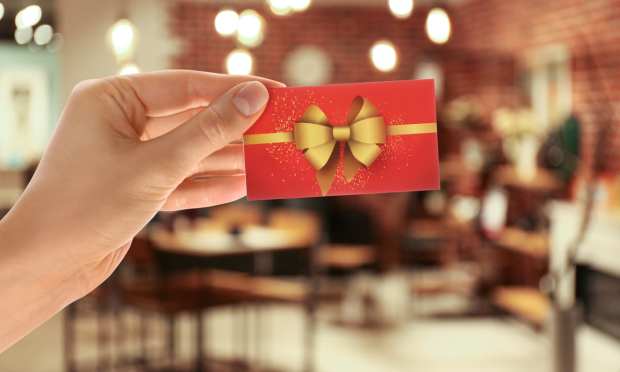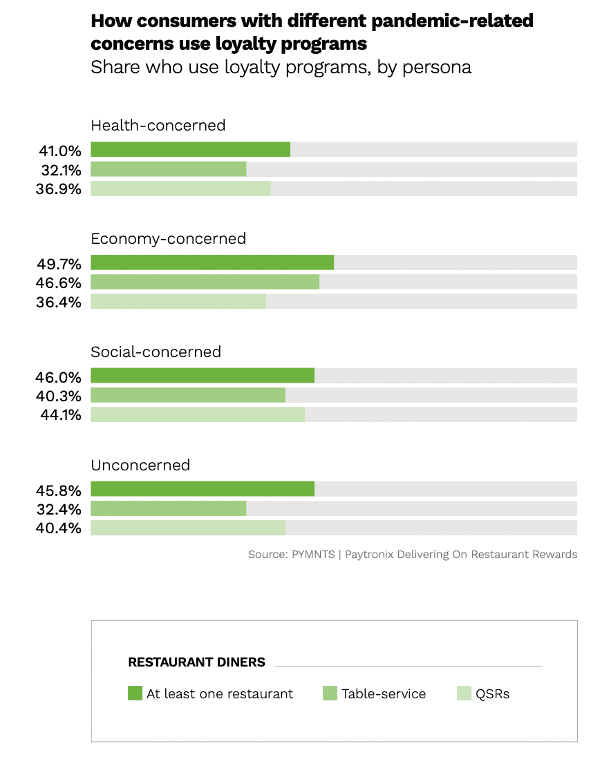Loyalty Programs Key Factor Behind Increased Restaurant Spending, PYMNTS Data Show

At a time when restaurants are seeking a bigger share of consumers’ digital spending, new research suggests well-oiled loyalty programs can be a game-changers when it comes to getting good customers to visit more often and spend more when they do.
PYMNTS research finds that about 4 out of 10 diners would be inclined to spend more at a restaurant if it offered a loyalty and rewards program, and that figure goes up to 45 percent of diners for independent table-service restaurants. Of course, different customers use rewards programs differently, especially now, in this moment of flux.
A survey of over 2,000 U.S. consumers done in collaboration with Paytronix and published in this month’s edition of Delivering on Restaurant Rewards identified how four different restaurant customer personas play out in the loyalty space.
Specifically, the study looked at how diners whose primary pandemic concerns pertain to their health compared to those whose concerns skewed toward their financial situation or social connections, and to those who simply are unconcerned about COVID. Understanding these differences is key to delivering relevant offers to restaurants’ most frequent customers.
“We put a much greater focus on segmentation and artificial intelligence,” El Pollo Loco Vice President of Digital Andrew Rebhun told PYMNTS in a recent interview. “We’re really doing a much better job of understanding who our [customers] are and making sure we’re sending them offers and products that are most relevant to them.”

Today, the economy-concerned customer is the most likely to be using loyalty programs for at least one restaurant, with half of these consumers already engaging with restaurant rewards. They are followed by the social-concerned customer and the unconcerned customer. Health-concerned customers, who make up 39 percent of all restaurant customers, are the least likely to be using loyalty programs. This indicates that, to capture the spend of these programs’ most frequent users, the bigger the discount, the more consumers will engage.
One way that restaurants are making this work economically is by offering tiered rewards, with bigger discounts for more frequent customers. Fast-casual chain Qdoba, for instance, offers more points the more you visit, with those who have visited 25 or more times earning twice as many points as new customers and receiving a “Monthly Mystery Perk.”
Meanwhile, to draw in holdouts, emphasizing a loyalty app’s contact-free digital ordering and payment options could go a long way.
“Guest expectations have changed forever. Exceeding them requires not only improving the loyalty offering but using program data to improve the guest experience,” Michelle Tempesta, head of product and marketing for Paytronix, told PYMNTS. “Brands like Panera Bread and Jimmy John’s positioned themselves well by being early adopters of Apple Pay and Google Pay. They enabled diners to not only pay but to pass their loyalty identifier via a contactless tap at the point of sale. Guests feel safe, and the brands deliver an exceptional experience.”
It is worth noting that social-concerned and unconcerned customers are more likely to be using loyalty programs at quick-service restaurants (QSRs), as are health-concerned customers, while economy-concerned customers are more likely to be using them for table-service restaurants.
Many QSRs are targeting their social-concerned rewards users with deals and discounts tied to special events, catering to these customers’ desire for occasions to gather. Take, for instance, all the birthday freebies on offer — Pizza Hut’s free birthday cinnamon sticks, Krispy Kreme’s free donuts, Checkers’ free milkshakes. With each persona’s distinct wants and worries in mind, restaurants have the opportunity to deliver personalized rewards app experiences that will win consumers’ loyalty for years to come.
